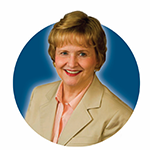It all started with a text.
Explore This Issue
September 2016Marguerite Wood, the practice administrator of ENT of Oklahoma, based in Lawton, Oklahoma, saw a text asking about any openings in her office. The young daughter of a friend of a friend was experiencing ear pain.
“They had gone to the emergency room, but the ER doctor there wanted them to see an ENT instead,” said Wood. “We were completely full that day, and the mom wasn’t giving any details about the ER visit.” Instead, Wood and the staff nurses asked questions about how long the pain had lasted, whether the seven-year-old patient had been taking any antibiotics, and so on. After a lot of fact-finding, Wood was able to work with the practice staff to get the patient in to see one of the practice’s physicians.
The girl was diagnosed with extensive acute otitis externa that was “so bad, they couldn’t clean it out—she had surgery the following day to insert an Otowick,” said Wood. “The ER had never contacted us since the patient went there over the weekend and our schedule was full; however, based on the child’s age and acute condition, we were able to work her in as an emergency patient.”
Wood said that her practice held a quick meeting—known in their office as a “huddle”—to discuss the scenario; it helped the practice develop a plan on how to handle future emergency work-ins for other patients. “It was so we could bring a renewed awareness to the quality of care for our patients,” she said.

© Digital Genetics / SHUTTERSTOCK.COM
This is just one example of how staff meetings, whether fluid or formalized, can help establish new policies, shape the way an effective medical practice runs, and further refine how it can best serve patients. Useful staff meetings that don’t waste time are a great way to hear and convey information that can keep your medical office working at its best.
How can your meetings improve?
Tip 1: Tailor Meeting Lengths to Agenda Items
Staff meetings can range in focus. Some are extensive and involve the entire group of professionals who work in an office discussing a full agenda of items. Others are shorter, focused on a single topic, and scheduled on the fly.
“We have a regular staff meeting once a month, but in the back of my mind, I always want to not have staff meetings because they represent lost income, lost time, the potential for fast aggravation,” said Winston Vaughan, MD, founder and director of the California Sinus Centers in the San Francisco Bay area. “I don’t find them to be super productive for productive people.”
Instead, Dr. Vaughan convenes what he calls impromptu “micro meetings” that are shorter than 10 minutes long and focus on one particular issue. “If we have a clinic and the next patient isn’t coming for 20 minutes, I’ll turn to our nurses and say, ‘Let’s talk about our insurance authorization process.’”
When a larger issue or issues need to be discussed, Dr. Vaughan schedules a meeting and lets the staff know in advance what’s on the agenda. “Usually, they are more formal and the topics tend to be where there is an area of significant stress, gossip, or a staff member change,” he said. “If we need a new medical assistant, for example, I’ll put three points on an agenda and a different person will be asked about each point. My nurse practitioner can speak about what qualities we need in the new assistant, what background does this person bring, and what hours they should have. I’ll ask the other medical assistant we have what kind of person she wants to work for, while human resources will handle posting the job advertisement. Each person will handle a different part of the agenda.”
Expect staff people to offer ideas for solutions, rather than just come up with what is wrong. Asking them for ideas doesn’t mean you are promising to do what they suggest, but it gives them a voice, and you’ll be amazed what they come up with. —Carol Stryker
Tip 2: Hold Regular Meeting Days and Times
If your office is having ongoing staff meetings, perhaps once a week or once a month, they should be scheduled for a certain day and time, said Carol Stryker, the principal of Symbiotic Solutions in Houston. Her firm works with non-hospital-based physician offices and clinics to run their operations more effectively. Maintaining a regular day and time for the staff meeting makes it more difficult for physicians and staff to schedule things that interfere with meeting attendance.
Tip 3: Start on Time
Meetings must start without delay so that no one feels their time is wasted. Otherwise, “you are training people that showing up on time is not worth the effort,” said Stryker.
Tip 4: Pay Attention
Once the meeting begins, pay attention. Otherwise, your staff won’t be engaged. “If the doctor demonstrates that he or she thinks the meeting is important, the staff will believe it,” said Stryker. At one practice, Stryker said the physicians would all bring patient charts to each meeting and would read them during the meeting, which sent the wrong message to staff. “You are either present or not present at a meeting,” she said. Don’t multitask; leave the files out of the meeting.
Tip 5: Save Issues for the Meeting
When you have regular staff meetings with an agenda of what will be discussed, you don’t have to waste other time discussing solutions. “If an issue comes up during the workday, the doctor will either blow it off or will stop in his or her tracks and try to figure it out right then instead of going to see the next patient,” said Stryker. “If you have regular staff meetings, it is natural, appropriate, and productive to say, ‘Bring that up to the group along with ideas on how to make it better’ at the next staff meeting.”
Wood said that when staff come to her about issues, she will add them to the agenda she prepares for each meeting. “I add new ideas to the agenda about things we don’t want to forget,” she said.
Tip 6: Listen to Your Staff
Sometimes, physicians need to meet to discuss topics the whole staff doesn’t need to hear, such as remodeling an office, dividing up profits, or planning a potential relocation, said Stryker. But when physicians want to discuss things more broadly, such as soliciting feedback on staff priorities for a potential remodel, or what the patient experience at that office is, the full staff should be included.
“If you care what your patients think, your staff is a critical resource,” because they interact with patients far more than the physicians do, said Stryker. She worked with one practice where “the doctors thought people were ape over the reception area’s saltwater fish tank; the receptionist told them that patients couldn’t care less,” said Stryker. “They just wish you ran on time.”
The bottom line: Office staff likely hear more candid feedback from patients than the physicians hear, and their input is valid for physicians who want to understand the patient experience..
Cheryl Alkon is a freelance medical writer based in Massachusetts.
Ask for Advice, Not Just Complaints
In Dr. Vaughan’s micro meetings, he will ask one attendee, usually the most junior person there, about what he or she thinks about a specific issue. This is a way to “empower” the non-speakers to talk, and to encourage everyone to “talk from the heart,” he said. “This avoids strategizing and gossiping beforehand, because people don’t know these micro meetings are coming.”
In larger staff meetings, encourage your staff to come up with new ways to handle problems, and not to just air grievances about the problems themselves. “Expect staff people to offer ideas for solutions, rather than just come up with what is wrong,” said Stryker. “Asking them for ideas doesn’t mean you are promising to do what they suggest, but it gives them a voice, and you’ll be amazed what they come up with.”—CA
